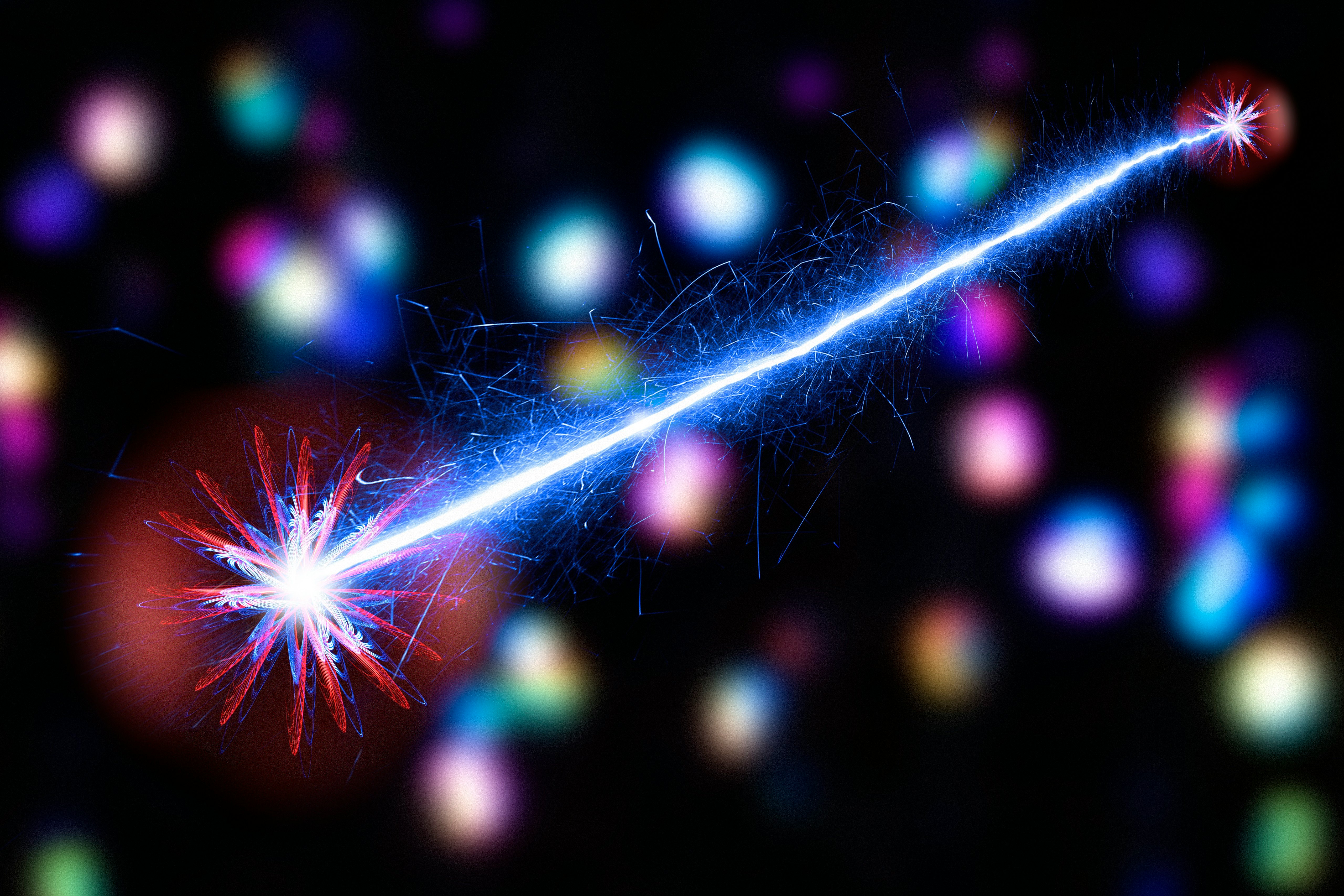
A group of physicists just built a tiny model of a wormhole on a quantum computer and sent a qubit — a quantum unit of information — through it.
It’s a tiny step, but it could be the first step toward not only teleportation, but resolving the differences between the two fundamental sets of laws that govern our universe. The physicists published their results in the journal Nature.
What’s New — CalTech physicist Maria Spriopulu and her colleagues built a very small, very simple quantum physics system on a quantum computer chip. They added a qubit of data to one part of the system, and then they watched their qubit of data emerge from a completely different part of the system, which had been quantum entangled with the first part.
“It is moving quantum information around on the chip, but it's through a shortcut that it's making itself,” says Fermilab physicist Jospeh Lykken, a coauthor on the paper, in a press conference.
That shortcut is what physicists call an “emergent space,” and it’s basically the tiny, two-dimensional equivalent of a wormhole: a shortcut between two points in space. If you look at the math that describes what happened on the quantum computer chip, it’s exactly the same as the math that describes a wormhole, also called an Einstein-Rosen bridge (a term Marvel Cinematic Universe fans might recognize), between two distant points in space.
“It looks like a duck, it walks like a duck, it quacks like a duck,” says Lykken. “In terms of the properties that we look at, it looks like a wormhole.”
But it’s complicated.
“That is not to say that we created a rupture of spacetime inside the computer,” says Spiropulu in the press conference. At least, not yet.
Instead, they built a tiny system that quantum-teleported a qubit of information in a way that could be described with the same set of equations physicists would use to describe something moving through a wormhole. The tiny, short-lived quantum tunnel on Spriopulu and her colleagues’ computer chip is at one end of a very long continuum of things that can be described with those equations, with a full-fledged wormhole tunneling through spacetime on the far end.

Here’s the background — The experiment worked thanks to a connection between the physics of wormholes and the physics that drive a phenomenon Albert Einstein described as “spooky action at a distance,” or quantum entanglement. What physicists know is that sometimes subatomic particles, like photons, form inexplicable connections even over vast distances, so that whatever happens to one particle also happens to the other, even though they’re physically far apart. And it turns out that you can describe quantum entanglement using the same set of equations that describe wormholes, and vice versa.
“The physics, whether you do the description in one way or another, is equivalent,” says Spiropulu.
In a 2019 paper, Harvard physicist Daniel Jafferis, also a coauthor on the paper, suggested that two models of a quantum system, if they were entangled, should behave in ways that — on paper — were the same as how wormholes behave. And that’s exactly what happened.
“This does give us more confidence that we’re on the right track,” says Jafferis. “This is gravity in a little universe in a box, but it is probably strong evidence that our universe operates by similar rules.”
Why It Matters — This tiny quantum experiment could be a huge step forward for physics.
“Quantum gravity” is what physicists call this weird duality between wormholes and quantum entanglement, and it’s a rare link between quantum mechanics — the set of rules that describe how physics works at very, very tiny subatomic scales — and general relativity, the set of rules that describe how things like gravity and spacetime work at the scales we’re all used to working with.
The problem is that two fundamental sets of rules describe how the universe works at different scales — general relativity and quantum mechanics — and they inherently contradict each other. Trying to reconcile the two has vexed physicists for decades and will probably vex them for decades more.
However, Spriopulu and her colleagues’ baby wormhole, as Spiropulu calls it, may be a step toward making it all make sense. Their recent experiment is the first actual experiment testing quantum gravity, and they say the results are encouraging.
“So far, quantum gravity ideas are tested only in the minds of quantum gravity theorists and string theorists,” says Spiropulu. “And now we have a first attempt to ground them, using the quantum hardware of today to try and do some demonstrations and tests of these ideas.”
What’s Next — The next step is to build a slightly bigger baby wormhole.
The quantum processor chip Spriopulu and her colleagues used held only nine qubits, so they had to figure out how to make their quantum system as small and simple as possible without losing the properties they wanted to model. And that meant they couldn’t see much detail of the two-dimensional baby wormhole the system produced; they could basically just see that it had happened.
“We infer the opening up of a two-dimensional space bridge where the qubit can traverse, and we measured it on the other side,” says Spriopulu. But a larger system will let the physicists observe more detail about quantum teleportation and the emergence of the qubit on the other side. They’re also working on ways to measure and describe the “emergent space” inside the baby wormhole.
Eventually, Spriopulu and her colleagues, or others, might also try entangling two quantum computers at a distance and seeing whether something similar happens. The biggest hurdle at this point is developing quantum computing hardware that can handle the more complex job.
“Improve this technology a little bit, and you could do a very similar experiment where the quantum information disappeared in our laboratory at Harvard and reappeared at the laboratory at Caltech,” says Lykken. “That would be more impressive than what we actually did on a single chip, but really, the physics we're talking about here is the same in both cases.”







